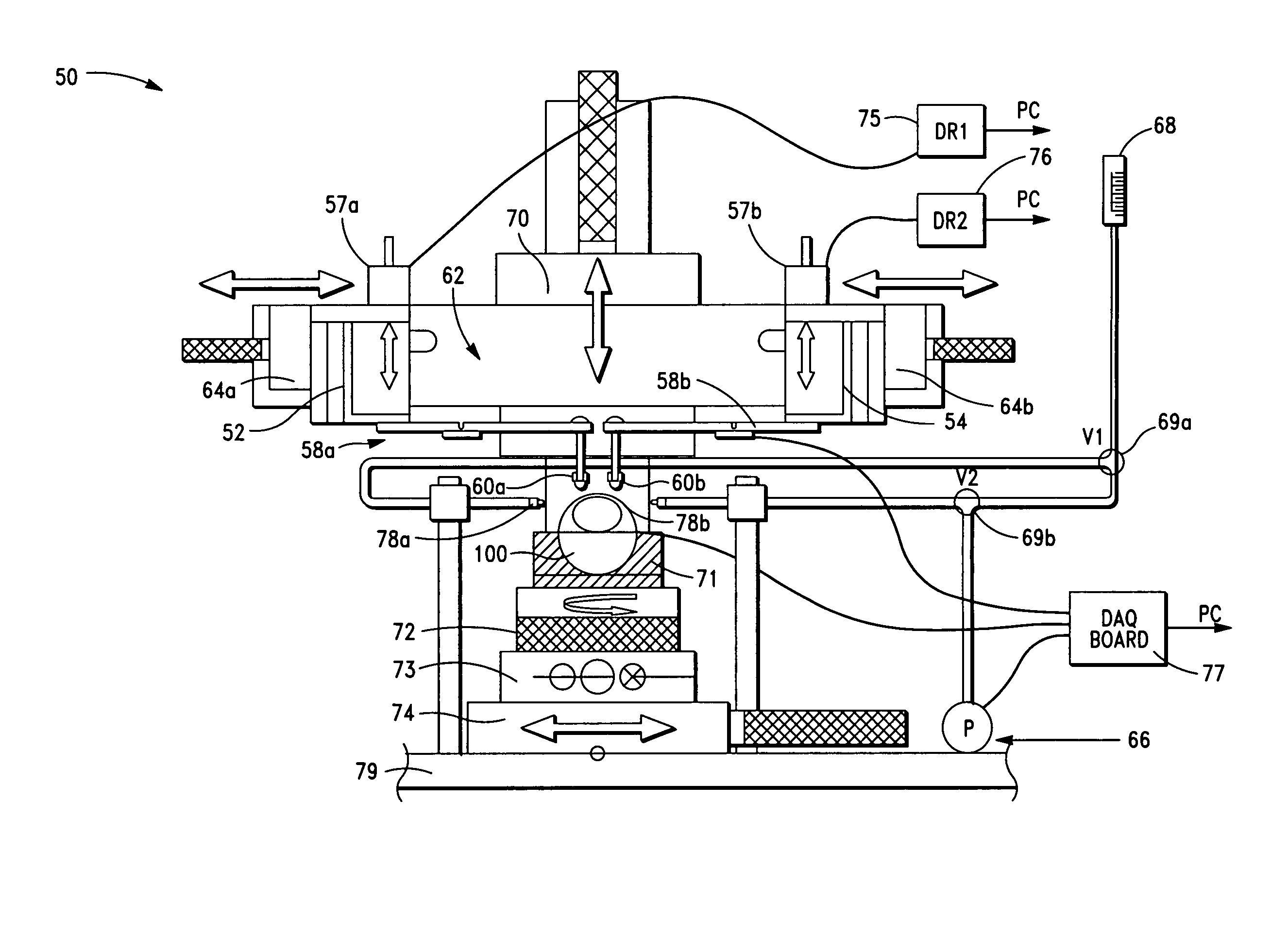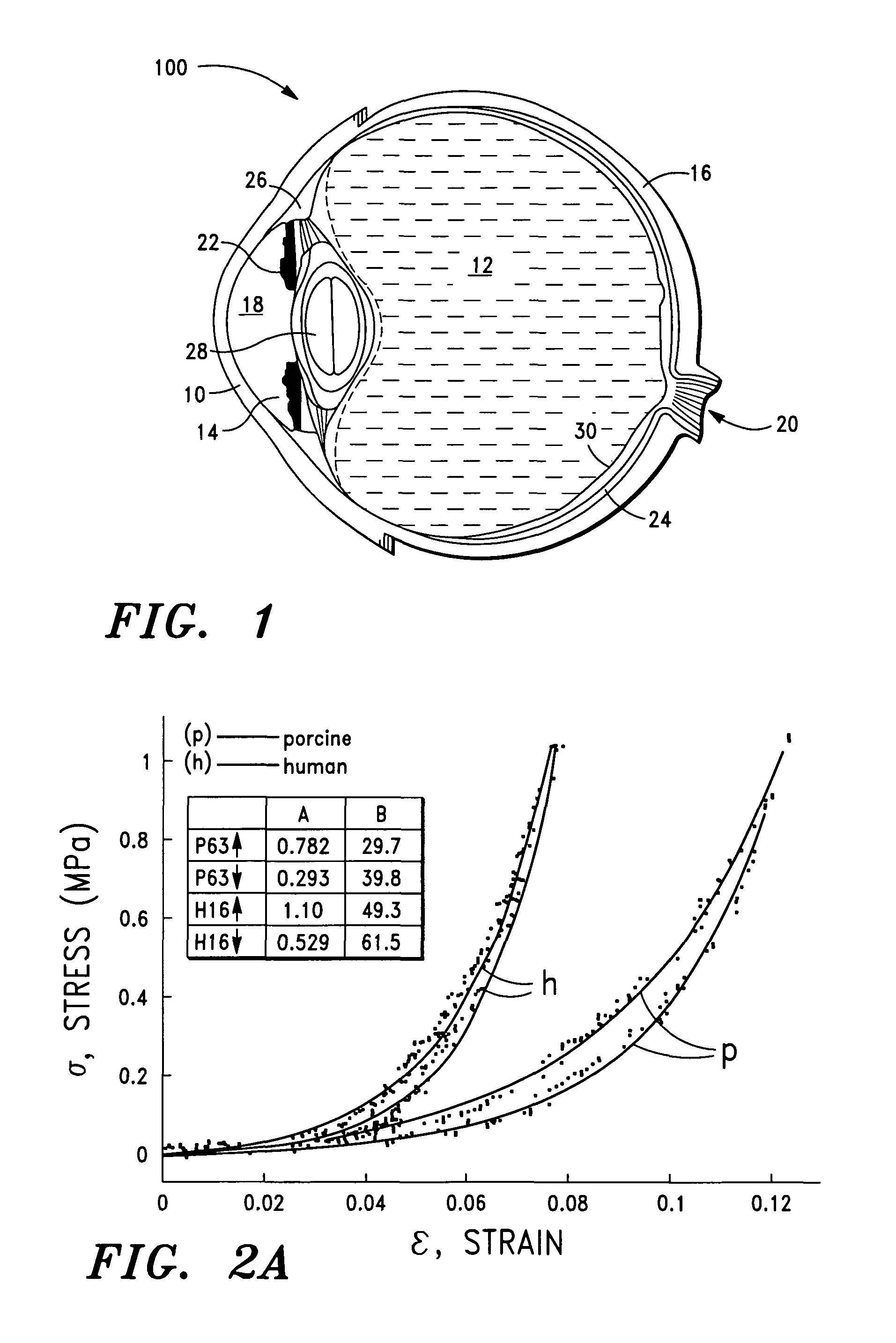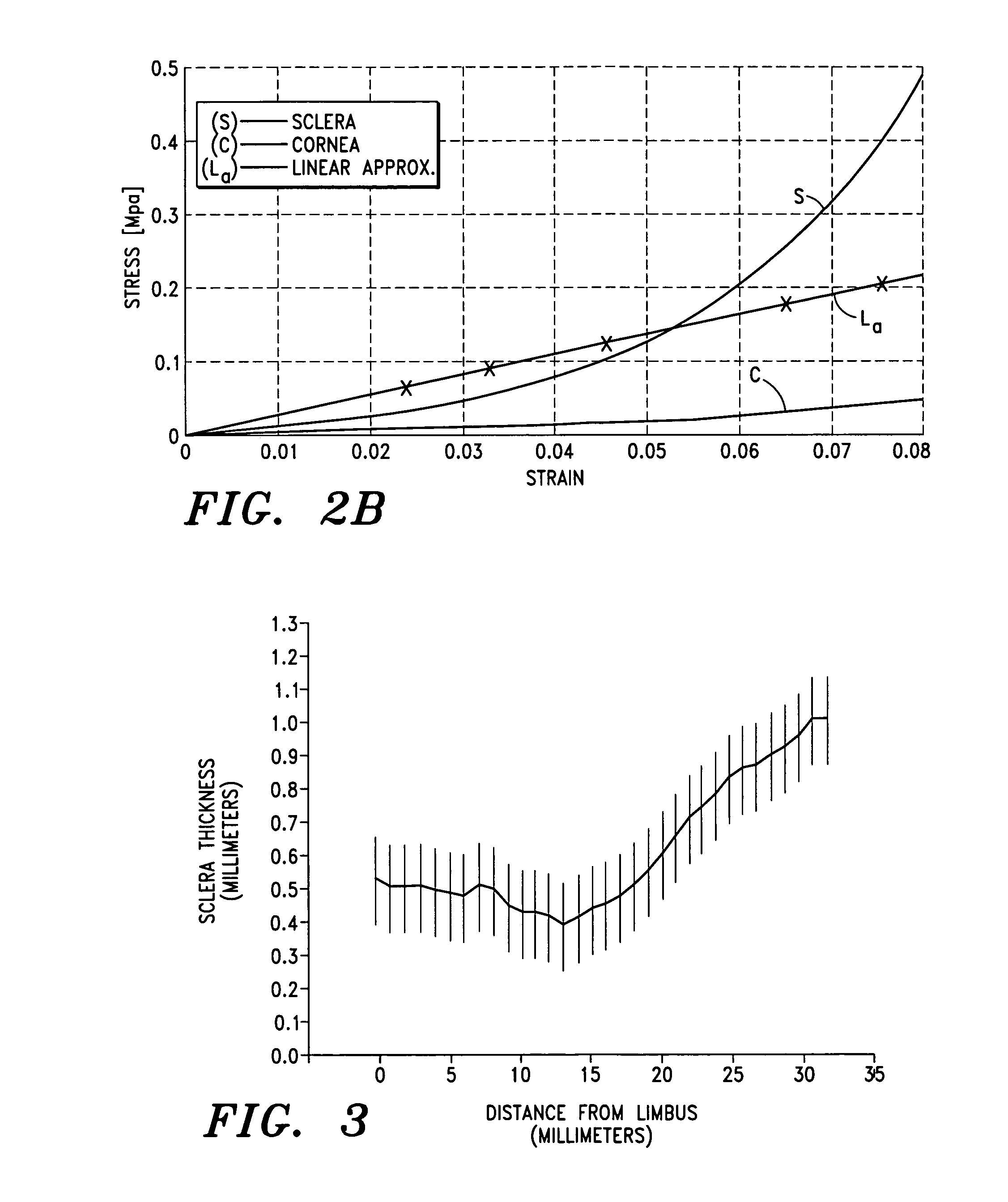Eye tonometry apparatus, systems and methods
a technology of tonometry and apparatus, applied in the field of systems and methods for measuring intraocular pressure, can solve the problems of inability to accurately measure iop, inability to observe, and inability to accurately measure goldmann tonometry
- Summary
- Abstract
- Description
- Claims
- Application Information
AI Technical Summary
Benefits of technology
Problems solved by technology
Method used
Image
Examples
example 1
Measurement of IOP
[0207]As discussed in detail above, IOP can be determined by linear interpolation between the two nearest IOP values by the following relationship:
p=(pa*a+pb*b) / (a+b) [mmHg]
where pa and pb are the two nearest calibration pressures and a and b are the vertical distances to the calibration curves reflecting the calibration pressures, i.e. pa and pb.
[0208]By way of example, from experimental curve C30 shown in FIG. 18, the distance to the two nearest calibration curves is a=0.04 N and b=0.05 N. The two nearest calibration pressures are pa=20 mmHg and pb=15 mmHg, respectively.
[0209]Using Eq. 6, shown above, IOP (p) is determined as follows:
p=(0.04×20+0.05×20) / (0.04+0.05)=17.22 mmHg.
example 2
Measurement of Fluid Discharge, i.e. Aqueous Humor Outflow, from an Eye
[0210]In the following example Equations 8 and 14, and FIG. 19, above, are employed.
[0211]As discussed above and illustrated by Eq. 8, fluid outflow from an eye is proportional to the change of IOP over a given time interval. During mechanical palpation with one or more probes, the IOP inside the eye increases as a result of application of external force. A finite fluid resistance and increased IOP leads to an increase in the outflow from the eye.
[0212]Upon removal of an external force, IOP generally returns to a value that is lower than its initial value. This phenomenon is shown in FIG. 19, i.e. curves C31-C36, where each of these curves represents a separate palpation sequence, as illustrated in FIGS. 13A-13D. As discussed above and illustrated below, the amount of fluid discharge or outflow from an eye can be determined (or estimated) from the data embodied in each of the curves, i.e. curves C31-C36, shown in...
example 3
Measurement of Aqueous Humor Outflow From an Eye
[0219]In this example, instead of using the curves shown in FIG. 19, i.e. curves C31-C36, the force curves shown in FIG. 14, i.e. curves C8-12, are employed. As illustrated in FIG. 14, curves C8-12 reflect measured initial and final force values, F1i and F1f, at t1 and t2, respectively, measured with a first probe during palpation with a second probe.
[0220]Fluid outflow from the eye can then be determined from the following relationship
ΔV=K(F1i−F1f)
[0221]From curve C12 in FIG. 14 (i.e. p=35 Hgmm), F1i=approx. 0.404 N and F1f=approx. 0.32 N, therefore
[0222]K=ΔVF1i-F1f=16.310.404=0.32=194.2μL / N.
[0223]As will readily be appreciated by one having ordinary skill in the art, the present invention provides numerous advantages over conventional systems and methods for measuring IOP. Among the advantages are the following:[0224]The provision of IOP measuring systems and methods that facilitate measurement of IOP by a patient without...
PUM
 Login to View More
Login to View More Abstract
Description
Claims
Application Information
 Login to View More
Login to View More - R&D
- Intellectual Property
- Life Sciences
- Materials
- Tech Scout
- Unparalleled Data Quality
- Higher Quality Content
- 60% Fewer Hallucinations
Browse by: Latest US Patents, China's latest patents, Technical Efficacy Thesaurus, Application Domain, Technology Topic, Popular Technical Reports.
© 2025 PatSnap. All rights reserved.Legal|Privacy policy|Modern Slavery Act Transparency Statement|Sitemap|About US| Contact US: help@patsnap.com



